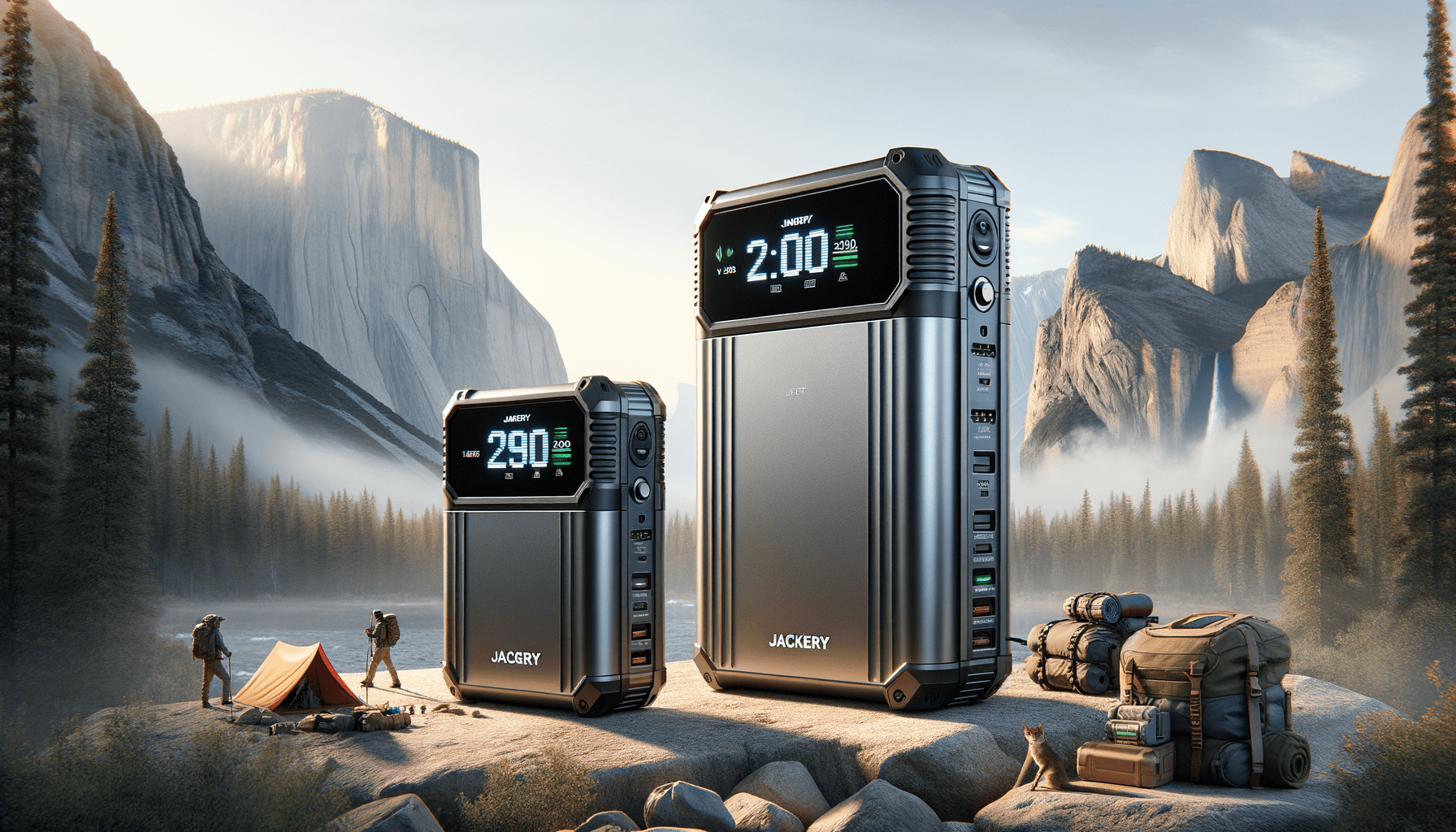In a world where being off-grid is becoming an increasingly popular lifestyle choice and having backup power at home is a must, portable power stations are more important than ever. Comparing two popular models, the Bluetti PS72 and Jackery 300, can give us insights into which might be the best fit for your needs. Whether you’re looking for a reliable source of power for camping, working remotely, or ensuring you have electricity during an outage, we’ve got the technical details and perks of each to help you decide.
Key Differences and Similarities at a Glance
| Feature | Bluetti PS72 | Jackery 300 |
|---|---|---|
| Battery Capacity | 716Wh | 293Wh |
| AC Output | 700W continuous, 1400W surge | 300W continuous, 500W surge |
| Life Cycles | 2500+ to 80% capacity | 800 to 80% capacity |
| Output Options | Various, including wireless charging | Multiple, no wireless charging |
| Solar Input | 200W max | Varies with panel (up to 90W) |
| Recharge Times | Varies with input method | Wall Outlet: 4.5 hours, Solar: ~5 hours |
| Weight | 21.4 lbs | 7.1 lbs |
| Warranty | 5 Years | 3 Years |
| Price Point | Higher | Lower |

Digging Deeper: Battery Capacity and Output Power
A core element to consider when choosing a portable power station is its battery capacity, expressed in watt-hours (Wh). The Bluetti PS72 leads with 716Wh, making it a powerhouse for extended use. Meanwhile, the Jackery 300 offers 293Wh, suitable for lighter use. The continuous and surge power ratings also show the Bluetti PS72 as capable of supporting higher-wattage appliances with its 700W and 1400W ratings over the Jackery’s more modest 300W and 500W.
Looking at Life Cycles
Life cycles indicate how long the battery will last before its capacity drops to 80% of its original state. Bluetti PS72 promises over 2500 life cycles, hinting at longevity and durability, while the Jackery 300 is touted to have around 800 cycles, which is decent for its price range.
Output Versatility for Modern Needs
Both devices come with a variety of output options, but Bluetti PS72 stands out with its 100W USB-C ports and the bonus of a wireless charging pad. For any modern tech enthusiast, those features might tip the scales.
Solar Charging and Eco-Friendliness
Solar compatibility is a critical factor for eco-conscious users and adventurers alike. The Bluetti PS72’s maximum solar input of 200W can be a game-changer, doubling what the Jackery 300 accepts. This means faster solar charging times and less waiting to get back to full power.
Design and Portability
While both options are portable, the Jackery 300 wins in terms of weight, at just 7.1 lbs compared to the Bluetti’s 21.4 lbs. However, heavier weight in power stations often correlates with more capacity and output options, as seen with the Bluetti PS72.
Warranty and Customer Assurance
Warranty periods are tokens of a manufacturer’s confidence in their product. Bluetti surpasses in this realm with a reassuring 5-year warranty against Jackery’s solid 3 years. This could sway users looking for a long-term investment.

The Verdict: What’s Best for You?
In summary, if you need a robust, high-capacity unit that can handle more demanding devices and longer usage, the Bluetti PS72 is your go-to. On the flip side, if portability and budget are key concerns, and your power needs are moderate, the Jackery 300 may be your best bet. Ultimately, the choice depends on your unique power needs, budget, and how you plan to use the device.


Leave a Reply